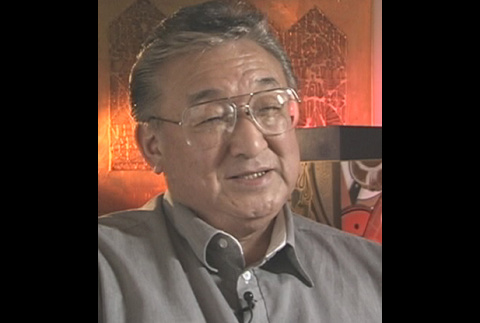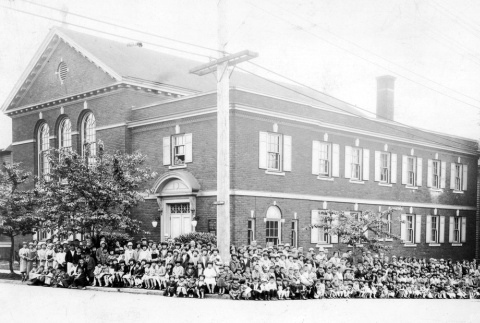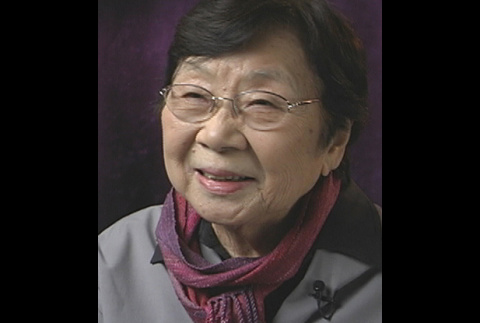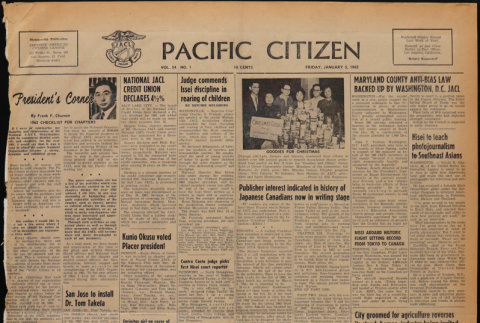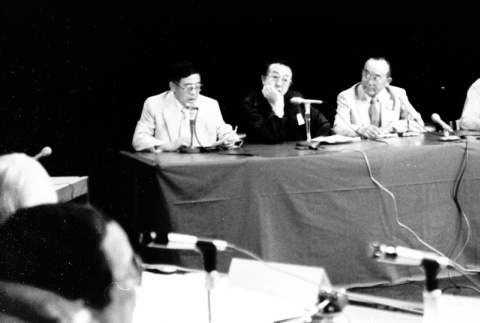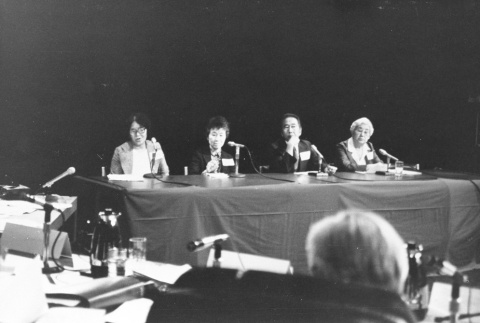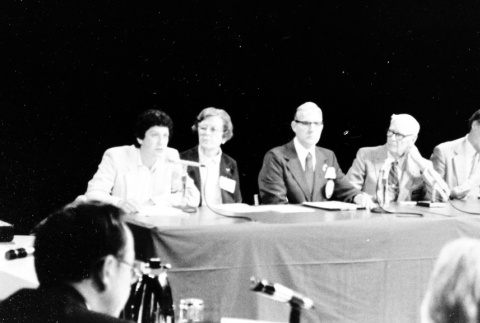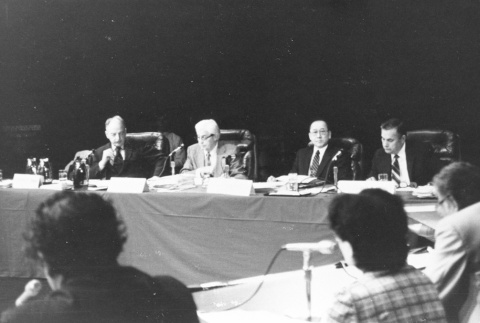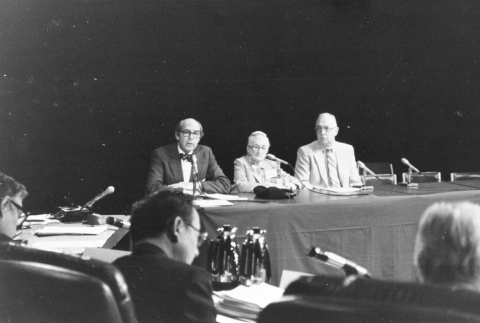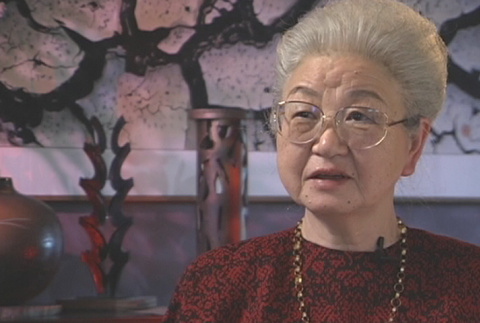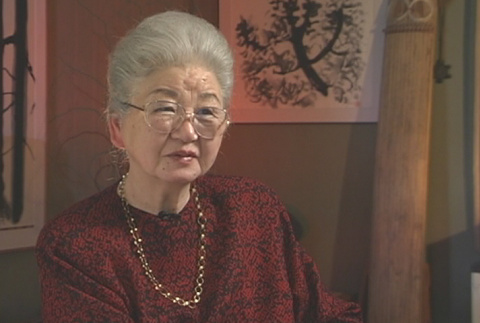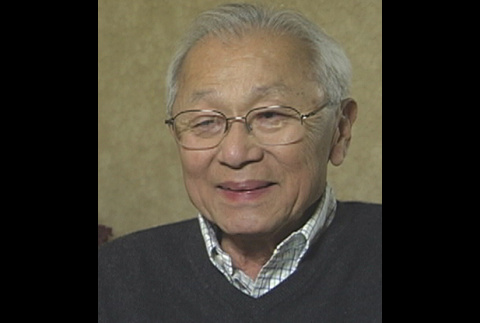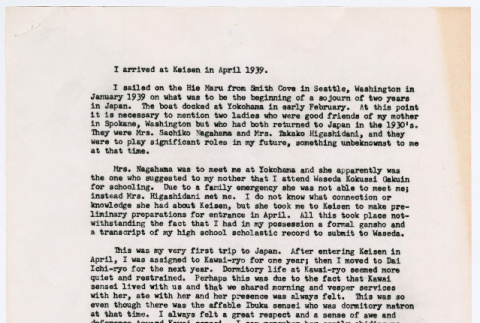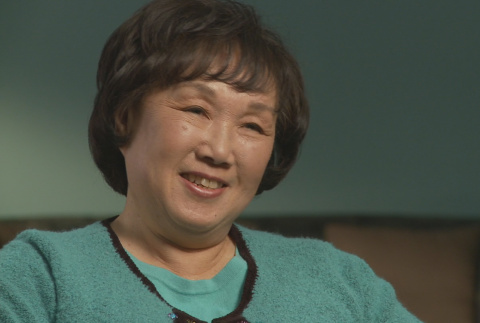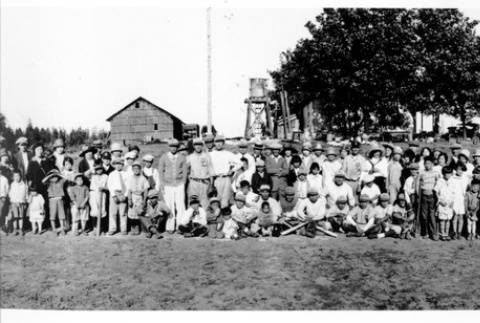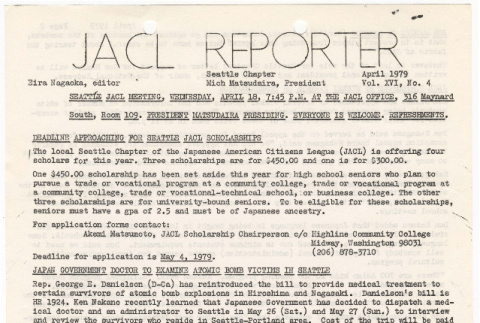974 items
974 items

Narrator Frank S. Fujii
Nisei male. Born January 14, 1930, in Seattle, Washington. Grew up in the Jackson Street neighborhood of Seattle, Washington. Incarcerated at Puyallup Assembly Center, Washington, and Tule Lake concentration camp, California. Resettled in Seattle. Former teacher and varsity basketball coach at Seattle's Franklin High School and administrator at Seattle Central Community College.
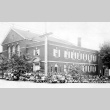
Collection
Kunitsugu Collection (ddr-densho-12)
The Kunitsugu collection, circa 1918-1930s, focuses on the business and leisure activities of the Kunitsugu family of Seattle, Washington. Seattle's prewar Nihonmachi area appears in the background of several of the photographs.

Narrator May Ota Higa
Nisei female. Born March 14, 1916, in Seattle, Washington. Grew up in Seattle and Ellensburg, Washington, before going to Japan to teach just prior to the onset of World War II. Returned to Seattle in 1941, and was removed with family to Puyallup Assembly Center, Washington, and Minidoka concentration camp, Idaho. After the war, resettled in …
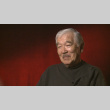
vh
Robert T. Ohashi Interview Segment 8 (ddr-densho-1000-350-8)
Meeting Japanese Americans from Seattle in the canneries
Nisei male. Born July 24, 1925, in Ketchikan, Alaska. Grew up in Ketchikan, where parents ran a store. During World War II, was removed to the Puyallup Assembly Center, Washington, and the Minidoka incarceration camp, Idaho. After leaving camp, went with family to work for a time in …
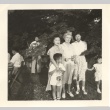
img
Visit from Ms. Mahon (ddr-one-2-156)
Black and white photographic print of Ms. Mahon (center) and unidentified individuals standing outside on lawn. Ms. Mahon served as the principal at Donor’s school, Bailey Gatzert grade school in Seattle, Washington. After Ms. Mahon retired, she visited Tokyo in 1950. Seattle’s Nikkei community raised the funds to pay for Ms. Mahon’s Japan trip. Inscribed on …
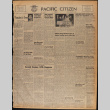
doc
Pacific Citizen, Vol. 54, No. 1 (January 5, 1962) (ddr-pc-34-1)
Selected article titles: "Maryland County Anti-Bias Law Backed Up by Washington, D.C. JACL" (p.1), "Publisher Interest Indicated in History of Japanese Canadians Now in Writing Stage" (p.1), "San Jose Nursery Plant Growers Win" (p.1), "Seattle Anticipates 10 Million Visitors During 184-Day Run of Century 21 World's Fair; Many JACLers Expected July 26-30" (p.4).
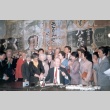
img
Governor signing redress bill for Seattle school clerks (ddr-densho-10-8)
Governor Booth Gardner of Washington State signs a state bill authorizing redress payments to twenty-seven former Nisei employees of the Seattle School District who lost their jobs during World War II due to their Japanese ancestry. (Information on back of the photograph.) The signing took place at the historic Nippon Kan Theatre in Seattle's International District, …

img
Redress hearings (ddr-densho-37-333)
The Commission on Wartime Relocation and Internment of Civilians (CWRIC) was created by an act of Congress on July 30, 1980. The committee was formed mainly to investigate matters surrounding the World War II internment of Japanese Americans and to recommend remedies. The CWRIC had no power to correct grievances. The hearings were conducted in twenty …
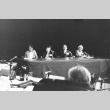
img
Redress hearings (ddr-densho-37-371)
The Commission on Wartime Relocation and Internment of Civilians (CWRIC) was created by an act of Congress on July 30, 1980. The committee was formed mainly to investigate matters surrounding the World War II incarceration of Japanese Americans and to recommend remedies. The CWRIC had no power to correct grievances. The hearings were conducted in twenty …

img
Redress hearings (ddr-densho-37-335)
The Commission on Wartime Relocation and Internment of Civilians (CWRIC) was created by an act of Congress on July 30, 1980. The committee was formed mainly to investigate matters surrounding the World War II internment of Japanese Americans and to recommend remedies. The CWRIC had no power to correct grievances. The hearings were conducted in twenty …

img
Redress hearings (ddr-densho-37-334)
The Commission on Wartime Relocation and Internment of Civilians (CWRIC) was created by an act of Congress on July 30, 1980. The committee was formed mainly to investigate matters surrounding the World War II internment of Japanese Americans and to recommend remedies. The CWRIC had no power to correct grievances. The hearings were conducted in twenty …
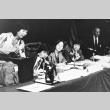
img
Redress hearings (ddr-densho-37-370)
The Commission on Wartime Relocation and Internment of Civilians (CWRIC) was created by an act of Congress on July 30, 1980. The committee was formed mainly to investigate matters surrounding the World War II incarceration of Japanese Americans and to recommend remedies. The CWRIC had no power to correct grievances. The hearings were conducted in twenty …

img
Redress hearings (ddr-densho-37-372)
The Commission on Wartime Relocation and Internment of Civilians (CWRIC) was created by an act of Congress on July 30, 1980. The committee was formed mainly to investigate matters surrounding the World War II incarceration of Japanese Americans and to recommend remedies. The CWRIC had no power to correct grievances. The hearings were conducted in twenty …

img
Redress hearings (ddr-densho-37-373)
The Commission on Wartime Relocation and Internment of Civilians (CWRIC) was created by an act of Congress on July 30, 1980. The committee was formed mainly to investigate matters surrounding the World War II incarceration of Japanese Americans and to recommend remedies. The CWRIC had no power to correct grievances. The hearings were conducted in twenty …

vh
Ayame Tsutakawa Interview II (ddr-densho-1000-95)
Kibei female. Born May 23, 1924, in the Hollywood area of Los Angeles, California. Sent to Japan to live with a relative when thirteen months old. Returned to United States and mother when twelve years old. Incarcerated at Sacramento Assembly Center and Tule Lake concentration camp, both in California. Resettled in Sacramento, California. Married George Tsutakawa, …
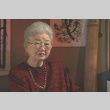
vh
Ayame Tsutakawa Interview I (ddr-densho-1000-94)
Kibei female. Born May 23, 1924, in the Hollywood area of Los Angeles, California. Sent to Japan to live with a relative when thirteen months old. Returned to United States and mother when twelve years old. Incarcerated at Sacramento Assembly Center and Tule Lake concentration camp, both in California. Resettled in Sacramento, California. Married George Tsutakawa, …

img
Issei at the Public Market (ddr-densho-36-46)
These Issei farmers are at the Public Market, in Seattle, Washington. By the World War I, Japanese Americans occupied seventy percent of the market's stalls. Here, they are donating vegetables to needy families. The Public Market is also known as the Farmer's Market and Pike Place Market. Original museum description: Japanese farmers had sold fruits and …

Narrator James "Turk" Suzuki
Nisei male. Born October 17, 1923, in Seattle, Washington. Grew up in Seattle, Washington, before being incarcerated in the Puyallup Assembly Center, Washington, and the Minidoka concentration camp, Idaho. Volunteered in the 442nd Regimental Combat team out of camp, and eventually returned to Seattle after World War II.

doc
Saji Kanesawa's Recollections (ddr-densho-446-434)
Article about Keisen years (1939-41) written by Ryo's Keisen classmate and later Seattle friend (written 1994)
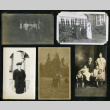
img
Japanese family (ddr-csujad-25-10)
A page from an album containing Japanese family photographs. Five photographs are pasted on the page. All photographs appear to be taken in Washington in the early 1900s. Include Japanese men in suits, women in western dress, and children. Include a family portrait which is taken at "Jackson Studio" in Seattle, Washington. Also include one photograph …

vh
Sally Sudo Interview (ddr-densho-1014-13)
Nisei female. Born December 1, 1935, in Seattle, Washington. During World War II, removed with family to the Puyallup Assembly Center, Washington, and the Minidoka concentration camp, Idaho. After leaving camp, resettled in Minneapolis, Minnesota. Spent many years raising a family and teaching in Japan before eventually returning to Minnesota.
(This material is based upon work …

Narrator Frank Yamasaki
Nisei male. Born January 26, 1923, in Seattle, Washington. Spent prewar childhood in South Park and Belltown areas of Seattle. Incarcerated at the Puyallup Assembly Center, Washington and Minidoka concentration camp, Idaho. Refused to participate in draft, imprisoned at McNeil Island Penitentiary, Washington, for resisting the draft. Resettled in Seattle.

Narrator Tadashi Kuniyuki
Nisei male. Born August 12, 1912, in Seattle, Washington. Grew up in Seattle, where parents owned a series of hotels. Graduated from the University of Washington prior to World War II. During the war, was removed to the Puyallup Assembly Center, Washington, and the Minidoka concentration camp, Idaho. After leaving camp, lived in Spokane, Washington, for …

Collection
Kanno Collection (ddr-densho-133)
The Kanno collection features three photographs of a Japanese American community gathering in the Green Lake neighborhood of Seattle, Washington. These photographs were also used in the book, The Green Lake Japanese American Community, 1900-1942.
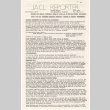
doc
Seattle Chapter, JACL Reporter, Vol. XVI, No. 4, April 1979 (ddr-sjacl-1-278)
Newsletter covering the following topics: Japanese Doctor to examine hibakusha victims in Seattle, Ken Nakano chair; Akemi Matsumoto announces 4 scholarship, 3-$450 and 1-$300; Ron Mamiya out as National Redress Committee Member?Interesting article on rift between National JACL and Seattle over carrying out the mandate from JACL National Council votes. Some big names like Bill Marutani …
